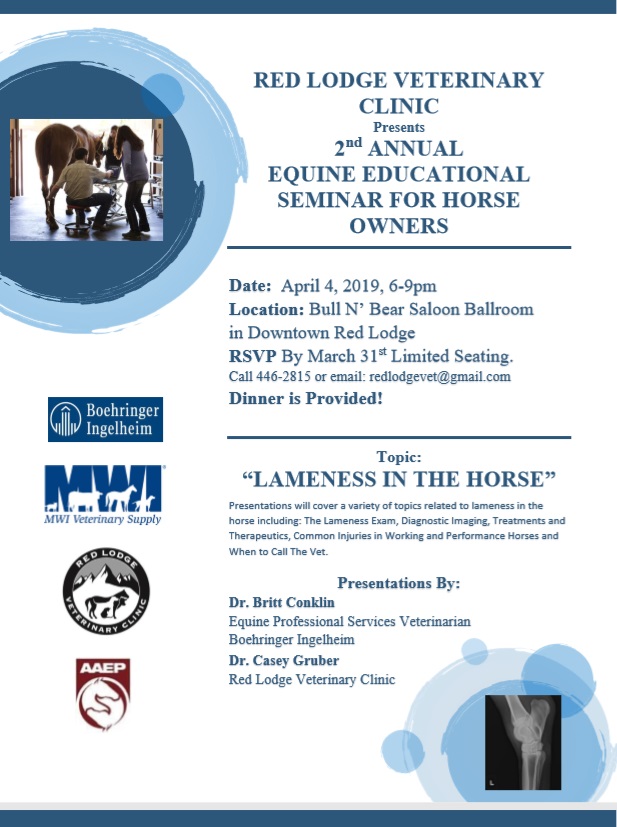Come join us for a fun, relaxed evening at our new facility. Meet our team, learn about the services we provide and enjoy some hors d’Oeurves and refreshments.
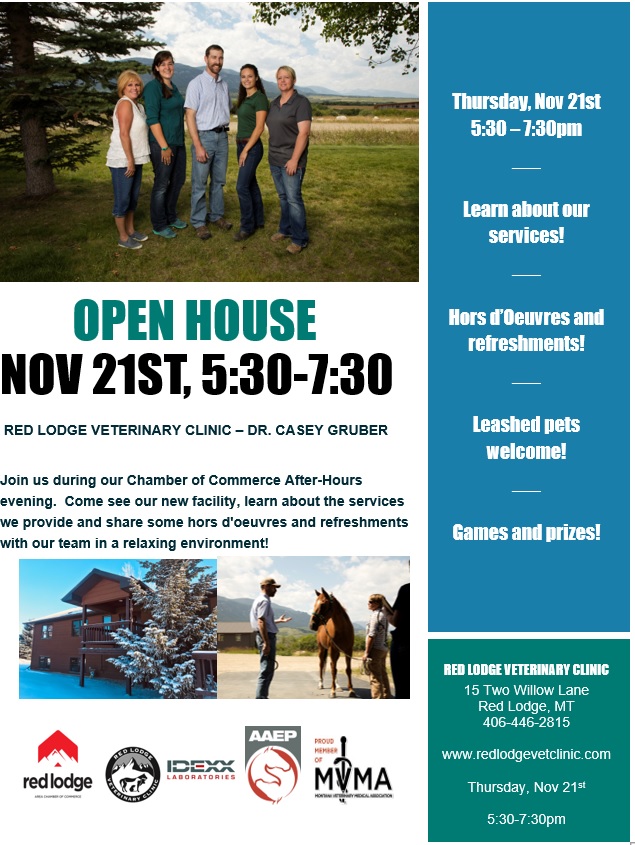
Come join us for a fun, relaxed evening at our new facility. Meet our team, learn about the services we provide and enjoy some hors d’Oeurves and refreshments.

Article by Dr. Casey Gruber – Originally posted on thehorse.com
Question:
My horse is swollen under his girth area on both sides of his body. There isn’t a sore; the area just seems very tender when I groom it. The girth does not seem to be rubbing. What could be causing this problem?
Answer:
This is not an uncommon finding you are describing with your horse but one that can be a bit tricky to figure out.
Though you mentioned it does not appear to be the result of rubbing, I would check your tack closely to make sure that excess pressure in the cinch or girth is not occurring at the swelling site.
If you ride in a western saddle, the length of the cinch can sometimes create pressure at the “D” ring where the latigo attaches to. Even an otherwise properly fit saddle can create “hot spots” or pressure sores in the girth region related to the contact site with the cinch.
These scenarios are less likely to occur with an English saddle, but still worth a closer inspection.
I have also seen horses develop allergic reactions (contact dermatitis) to a cinch based on their makeup (cotton, neoprene, etc.).
During this time of year, a horse’s longer coat can trap in moisture underneath tack leading to higher incidence of skin reactions or dermatitis. Sometimes an obvious rash is not always present. Even irritation from tack pulling on the coat can lead to inflammation and irritation of the area. This will hopefully improve within a week or two if the horse is not saddled during this time.
It is also recommended that you contact your local veterinarian to get his or her advice. A bacteria or fungal infection is possible in that location (including ringworm) and treatment will depend on many variables, including the horse’s general health, age, and geographic location. Please have your veterinarian examine the horse if you continue to have concerns.
Q: I just purchased a five year old horse with unknown vaccination history, what does she need?
A: Vaccinations for horses are split into 2 groups: core and risk-based vaccines. The type and number of vaccines needed will be determined by the horses age, health status, anticipated use and management practices. Horses that either have never been vaccinated or their vaccine history is unknown should receive the initial priming vaccine followed by a booster in 28 days before they go on an annual vaccination to schedule. This schedule maximizes the efficacy of the vaccine and strengthens the horse’s immune system.
Q: My horse travels to shows in and outside of the state, are there any other vaccines I should be giving?
A: Vaccination against contagious diseases such as influenza, equine herpes virus (rhinopneumonitis) and strangles should be considered for horses traveling, boarding at horse barns, show horses and for horses managed at other at high-risk areas. Risk of disease may vary throughout the year or based on the horse’s health status. Contact our office at 406-446-2815 to set up a customized vaccination program for your horse
Q: My mare just foaled out, when does the foal need its first vaccines?
A: The answer depends on if your mare was fully vaccinated before and during pregnancy. Typically your foal will not need a vaccine until 4-6 months of age.
Q: I have a stallion and a mare that I would like to start breeding, what shots do they need and when?
A: If you plan on using your horses for breeding, please contact the clinic at 406-446-2815 so that we can discuss a vaccination program specific to your horse.
Q: Can I administer vaccines to my horse myself or does a veterinarian need to do it?
A: The Rabies vaccine is the only vaccine that state and federal laws require a veterinarian must give. All other vaccines can be administered by non-veterinarians. However, administering vaccinations incorrectly may create health problems or limit the effectiveness of the vaccine. Additionally, many of the pharmaceutical companies the produce vaccines provide assurance guarantee programs for their vaccines if administered by a licensed veterinarian. This means that if a reaction or side-effect occurred from the vaccine and it was administered by a veterinarian, the pharmaceutical company would help support the owner financially in seeking medical attention for their horse.
Please contact Dr. Casey Gruber at 406-446-2815 for a personalized vaccination program for your horse.
Q: I have a barn cat, what vaccines does she need?
A: The core feline vaccines regardless of lifestyle are: Viral Rhinotracheitis (Herpesvirus type 1), Calcivirus, Panleukopenia and Rabies. If your cat is 8 weeks or younger, we recommend the FVRCP combo at 8, 12 and 16 weeks. If your cat is over the age of 16 weeks and has not been vaccinated before, she will need the FVRCP combo vaccine, then re-vaccinated in 3-4 weeks, the FVRCP vaccine is boosted one year after the initial series then every 3 years. The Rabies vaccine can be given as young as 12 weeks, the first Rabies vaccine will be boosted in one year, then every three years.
Q: My indoor/outdoor cat has contact with a lot of other cats, are there any other vaccines I should think about?
A: If she is in contact with a lot of other cats with unknown vaccine history, we recommend vaccinating for Feline Leukemia. The vaccine is administered at 12 weeks of age, boosted in 3-4 weeks then re-vaccinated annually. Before administration of the first vaccine it is recommended to test your cat for Feline Leukemia / Feline Immunodeficiency Virus. This is a quick blood test ran in-house. The reason we test first, is to ensure that your cat has not been exposed to the virus. If she has, the vaccine will not be effective. If your cat tests positive for FeLeuk or FIV, Dr. Gruber will discuss the options you have to manage the disease.
Q: My breeder gave the first vaccine at 5 weeks of age, how may more does my kitten need?
A: Any vaccination administered before 6 weeks of age will not be counted towards the initial series, as the maternal antibodies present from your kittens mom will prevent proper immunity to be acquired from that vaccine. She will still need three vaccines, administered 3-4 weeks apart with the final one at at least 16 weeks.
Q: What exactly is Feline Herpesvirus, Panleukopenia, Calicivirus and Rabies? And why do I need to vaccinate my cat?
FHV is a herpesvirus that causes the symptoms of sneezing, runny eyes and nose. Because herpes viruses do not go away, chronic infections are the rule.
Transmission
Airborne exposure from coughing or sneezing cats. Contact with infected salivary and respiratory secretions from food or water bowls and equipment.
Symptoms
Runny eyes, nose and sneezing.
FHV may cause permanent damage to nasal sinuses causing long-term sneezing problems or runny nose. FHV may also cause ulcers in the eyes called dendritic ulcers, which are usually seen in animals that are chronically infected.
Feline Panleukopenia is related to the Parvovirus of puppies. It causes young kittens born to non-vaccinated mothers to have brain damage.
Transmission
By contact with infected diarrhea, the virus can remain active on inanimate objects for months.
Symptoms
Vomiting, bloody diarrhea, fever, severe anemia, anorexia and lethargy. Older infected kittens will have diarrhea associated with severe immunosuppression. The most severe effect is that it destroys all the white blood cells which prevent the kitten from being able to fight off any disease. Very few kittens survive this disease.
Feline calicivirus is a virus that may cause the same signs as FHV but usually affects the eyes and lungs more. It causes ulcers on the mouth and tongue. The first sign may be excessive salivation and reluctance to eat. This is followed within 24 hours by ulceration of the tongue that may cause the whole tongue to slough.
Transmission
Through airborne contact with infected saliva, or droplets from sneezing. Along with contact from eye or nasal discharge and occasionally feces.
Symptoms
The first sign may be excessive salivation and reluctance to eat. This is followed within 24 hours by ulceration of the tongue that may cause the whole tongue to slough. Severe pneumonia may also be present. High fever is common. The cats will be very dehydrated with a painful and odorous mouth. Calicivirus may cause pneumonia that leads to death if not treated aggressively.
Rabies is an acute progressive viral encephalomyelitis that is fatal once clinical signs appear. It affects animals and humans.
Transmission
Through contact with infected saliva usually through a bite wound. Infected animals can shed the virus up to 8 days before clinical signs appear, which is why there is a 10 day waiting period before euthanizing an acutely aggressive dog or cat. The virus travels from the bite wounds via the peripheral nerves to the brain and then infects that salivary glands.
Symptoms
There are two different forms of Rabies – the ‘Furious Form’ and the ‘Paralytic Form’.
Furious Form – the animal becomes alert and irritable, loud sounds may invite a vicious attack, the animal may attack people other animals or any moving object. The pupils are usually dilated. As the disease progresses ataxia (muscle incoordination), and seizures occur and the animal will die of progressive paralysis.
Paralytic Form – causes ataxia, paralysis of the jaw muscles and throat resulting in excessive drooling and occasionally drooping jaw. The animals with this form may not be vicious and rarely bite. The paralysis progresses rapidly and results in coma and death within a few hours.
A virus that suppresses the immune system causing predisposition to deadly infections. Typically causes anemia and lymphoma. Cats can be carriers and transmit the disease, even if they appear healthy.
Transmission
Saliva, blood and occasionally urine and feces.
Symptoms
Symptoms include pale gums, jaundice, lethargy, anorexia, weight loss, upper respiratory infections, urinary tract infections, enlarged lymph nodes and difficulty breathing. 85% of cats with persistent infection will pass away from complications within the first three years after diagnosis.
Please call 406-446-2815 for more information and to schedule your cat today!
Q: I just got a new puppy what shots does he need?
A: The CORE vaccinations that your puppy needs are: Distemper, Adenovirus Type 2 (Hepatitis), Parainfluenza and Parvovirus combo vaccine. We recommend giving the combo vaccine at 8, 12 and 16 weeks. If your puppy is more than 16 weeks (4 months) he needs just two vaccines given 3-4 weeks apart. The Rabies vaccine is administered at 16 weeks of age. The first Rabies vaccine does not need to be boosted until 1 year later. After the one year booster of the initial series the DA2PPv and Rabies are only needed every three years.
Q: My breeder administered his first shot at 5 weeks, how many more do we need?
A: Any vaccination administered before 6 weeks of age will not be counted towards the initial series, as the maternal antibodies present from your pups mom will prevent proper immunity to be acquired from that vaccine. He will still need three vaccines, administered 3-4 weeks apart with the final one at at least 16 weeks.
Q: When can I socialize my puppy at the dog park?
A: We recommend waiting until 2 weeks after the initial series is completed before introducing him to other dogs with unknown vaccine history. This is also important during dog grooming sessions.
Q: I am worried about vaccine reactions, what should I watch for?
A: Although vaccination reactions are rare, we do advise to watch for swelling or tenderness at the injection site, lethargy, vomiting and diarrhea. Most reactions are self-limiting (meaning no medical intervention is necessary), but if you do see any reaction, please call the clinic 406-446-2815, so that we can be made aware and make recommendations regarding your puppies future vaccination visits.
Q: My puppy has been unwell, has a fever and diarrhea, can we still vaccinate today?
A: If your puppy is sick at the time of the vaccination visit, we will likely recommend waiting until he is healthier in order to make sure that the vaccination provides the best protection. If his immune system is compromised when we vaccinate, he will not generate the proper antibodies to fight the diseases we are trying to protect him from.
Q: What exactly is distemper, parvovirus, adenovirus and parainfluenza? And why do I need to vaccinate for them?
A: The diseases and viruses that we protect against can be life threatening. The vaccinations are safe, inexpensive and readily available.
Canine distemper is a serious and contagious disease caused by a virus that attacks the respiratory, gastrointestinal and nervous systems of puppies and dogs.
Transmission
Airborne exposure from coughing or sneezing dogs. Contact with infected salivary and respiratory secretions from food or water bowls and equipment.
Symptoms
Infected dogs will exhibit clear watery to thick pus-like discharge from their eyes. Next they will develop fever, nasal discharge, coughing, lethargy, reduced appetite, and vomiting. Once the virus attacks the nervous system, infected dogs develop circling behavior, head tilt, muscle twitches, convulsions with jaw chewing movements and salivation (“chewing gum fits”), seizures, and partial or complete paralysis. Distemper is often fatal, and dogs that survive usually have permanent, irreparable nervous system damage.
Parvovirus is a highly contagious virus that effects the gastrointestinal tract and rapidly dividing cells of dogs.
Transmission
By contact with infected diarrhea, the virus can remain active on inanimate objects for months.
Symptoms
Vomiting, bloody diarrhea and abdominal pain, low body temperature (hypothermia), loss of appetite and lethargy. Persistent vomiting and diarrhea cause a rapid onset of dehydration which can result in death within 48 hours of first symptoms if not treated immediately.
Canine adenovirus type 1 is infectious canine hepatitis, which is a viral infection of the liver. Canine adenovirus type-2 is one of the causes of infectious tracheobronchitis, also known as canine cough. CAV-2 is related to the hepatitis virus, canine adenovirus type 1 (CAV-1). It is the CAV-2 strain that we use in vaccines and it protects against CAV-1 as well.
Transmission
Through contact with blood, urine, feces, and salivary or respiratory secretions of infected animals.
Symptoms
CAV-1 results in vomiting, diarrhea, fever and abdominal pain; as well as clotting disorders, and corneal edema. CAV-2 causes a hacking cough, retching, coughing up white foamy discharge and conjunctivitis.
Canine Parainfluenza Virus is a highly contagious respiratory. CPIV is one of the most common pathogens that causes infectious tracheobronchitis or canine cough
Transmission
Airborne exposure from coughing or sneezing dogs. Contact with infected salivary and respiratory secretions from food or water bowls and equipment.
Symptoms
Include, dry or moist cough, low grade fever, loss of appetite, lethargy and nasal discharge.
Rabies is an acute progressive viral encephalomyelitis that is fatal once clinical signs appear. It affects animals and humans.
Transmission
Through contact with infected saliva usually through a bite wound. Infected animals can shed the virus up to 8 days before clinical signs appear, which is why there is a 10 day waiting period before euthanizing an acutely aggressive dog or cat. The virus travels from the bite wounds via the peripheral nerves to the brain and then infects that salivary glands.
Symptoms
Furious Form – the animal becomes alert and irritable, loud sounds may invite a vicious attack, the animal may attack people other animals or any moving object. The pupils are usually dilated. As the disease progresses ataxia (muscle in-coordination), and seizures occur and the animal will die of progressive paralysis. There are two different forms of Rabies – the ‘Furious Form’ and the ‘Paralytic Form’.
Paralytic Form – causes ataxia, paralysis of the jaw muscles and throat resulting in excessive drooling and occasionally drooping jaw. The animals with this form may not be vicious and rarely bite. The paralysis progresses rapidly and results in coma and death within a few hours.
Non-core vaccines are recommended depending on you puppies lifestyle.
Recommended if your dog will be attending puppy classes, doggy daycare, boarding facilities or shows.
Given at 12 weeks of age – orally, boosted annually.
Canine infectious tracheobronchitis, also referred to as canine cough is a highly contagious respiratory disease that affects dogs. It causes inflammation of the trachea and bronchi.
Transmission
Though contact with infected salivary or respiratory secretions. At risk pets are those that stay in boarding facilities, or go to dog shows, dog parks or live in multi-pet households.
Symptoms
Include dry hacking cough, retching and sneezing, watery nasal discharge and in severe cases pneumonia, loss of appetite, fever and lethargy.
Recommended if your dog will be attending puppy classes, doggy daycare, boarding facilities or shows.
Canine Influenza is also known as ‘Canine Flu’ and is a contagious respiratory disease caused by a virus.
Transmission
It is spread by contact with infected saliva or respiratory secretions. The infectious secretions can stay active for a period of time on clothing or other items
Symptoms
Coughing, runny nose, and fever. Not all infected dogs will show signs of illness. The severity of illness can range from no symptoms to severe pneumonia and rarely death
Recommended for all dogs, regardless of lifestyle. We include the Leptospirosis 4 way in all of our DA2PPv combo vaccinations.
Same schedule as the DA2PPv vaccine.
Leptospirosis is a disease caused by infection from Leptospira bacteria. Leptospirosis can cause kidney failure, liver failure, and severe lung disease.
Transmission
This bacteria is found in water and soil around the world and can affect pets and humans. Dogs can become infected by coming in contact with infected urine, soil, water or carcasses of other infected animals.
Symptoms
include fever, muscle tenderness, shivering, reluctance to move, increased thirst, dehydration, vomiting, diarrhea, loss of appetite, lethargy, jaundice (yellowing of the skin and mucous membranes), or painful inflammation within the eyes. It can also cause some bleeding disorders which can cause nosebleeds, petechia (pin-point red spots on gums or light-colored skin), as well as blood-tinged vomit, urine, stool or saliva.
Recommended for dogs that hike in the back country in rattlesnake areas. We have seen rattlesnakes around Cooney reservoir.
Intended for prophylactic use in healthy dogs. Aids in the reduction of morbidity and mortality due to intoxication with Crotalus atrox (Western diamondback rattlesnake) toxin. The vaccine is cross-protective against the venom of several other types of rattlesnakes found in California.
This vaccine should be given in the spring time as it is most effective in the first 4 months after vaccination.
Given no younger than 16 weeks, boosted in 3-4 weeks then annually.
Transmission
A bite from a Western Diamondback Rattlesnake can transmit the toxin Crotalus Atrox to your dog.
Symptoms
Include bleeding puncture wounds, difficulty breathing, lethargy, whimpering in pain, hiding, slow or labored breathing and tissue necrosis. The vaccine does NOT prevent your pet from needing emergency treatment, it only slows the progression of the venom in the body to allow you more time.
We carry antivenom in our practice in case of an emergency.
Please call the clinic 406-446-2815 to schedule an appointment and discuss our PUPPY PACKAGES!

At Red Lodge Veterinary Clinic, we understand the importance proper management of the foot plays in maintaining health, soundness, athletic ability and longevity of your horse. Quality and consistency in hoof care are vital to your horse’s success and comfort. We also understand the challenges horse owners face in identifying and contacting a farrier that will provide this service and do so on a consistent basis.
Additionally, we understand that farriers are not always contacted by horse owners or on a consistent basis. They may not be aware that their services are needed. Also, the horse owner may not have adequate facilities or be able to restrain their horse to allow a farrier the ability to provide the quality of service the horse needs.
What Can Be Done?
Horseshoeing Thursdays at Red Lodge Veterinary Clinic is a program designed with 3 goals in mind:
How Will We Do It?
Horseshoeing Thursdays at Red Lodge Veterinary Clinic allows horse owners and farriers to utilize our facility to meet and provide safe and convenient hoof care for the horse.
For Farriers: Organize your schedule, meet new and existing clients and maximize your efficiency and profits.
–Existing Clients:
Is your client located a long distance from where you work? Does your client not have safe facilities? Is the weather not helping? Horse owners and their horse(s) can meet you at our facility. This can help improve your daily schedule by minimizing travel time and provide a safe environment for you to work.
–New Clients:
Are you looking for business? Meet clients in need of someone with your skills to help their horse and grow your clientele.
Our facility is available for your use 8:30am-5:30pm every Thursday. There is no fee to use our facility. We simply ask that you clean up after yourself, respect our facility, equipment and staff. Along with signing a liability and facility use waiver once a year.
If you are interested in this program, we encourage you to check in with our office and provide your contact information so that we can help connect you with horse owners who are in need of your service.
For Horse Owners: Keep your horses hoof care on schedule so that you and your horse don’t miss a beat.
–Do you already have a farrier?:
Meeting them, along with your horse, at our facility can help improve their efficiency and keep your horse on schedule with their hoof care. It can also improve their quality of work if the facilities and weather at your home are not ideal. There is no fee to use our facility.
–Do you need a farrier?:
We will help connect you with one. Call our office at 406-446-2815 to learn more. We will try to put you in contact with a farrier. Dr. Casey Gruber will also be providing farrier service on an “as needed” basis every Thursday afternoon until you are able to connect with a farrier. We want to assure you that there are always options and resources available to help your horse.
Additional Information:
Contact our office at 406 446-2815 to learn more about this program and allow us to answer any questions you have.
There is no fee to use our facility. Please clean up after your horse and respect our facilities, staff, equipment and other clients and their animals.
Sedation is available if needed and must be administered by a veterinarian or veterinary technician. Cost of this service or any other services or supplies will be the responsibility of the horse owner or caretaker. Payment is due at time of service.
Please note that any horse at our facility exhibiting signs of illness or injury may be attended to by the veterinarian. Any costs incurred will be at the owner’s expense. Horses considered contagious or at risk to other horses or are dangerous or fractious will not be allowed on our facility. If you are unsure, call our office ahead of time to discuss details.
Welcome to Red Lodge Veterinary Clinic’s new facility. Located at 15 Two Willow Lane, Red Lodge.
Directions: Head Northwest on Hwy 78 from Red lodge (as if you are headed towards the show grounds) continue on Hwy 78 to Two Willow Lane. Turn Left onto Two Willow Lane, and we are the big brown building on the left-hand side.
Horse trailers, please use the cul-de-sac to turn around and park in the large gravel parking lot beside the equine facility. Cars and trucks can park on the south side of the main building, then enter up the front ramp of the main building to check in at reception.
Our new facility provides us with the much needed space to continue to practice high-quality mixed animal medicine, in an easy to access location within Red Lodge.
The main building has 2 exam rooms for you and your pets’ comfort, along with ample space for in-house surgeries, diagnostics and treatments. The equine treatment and examination facility will be connected directly to our hospitalized equine patient barn and bovine facility, allowing us to closely monitor our equine and bovine critical care patients while we continue with our daily in-clinic visits.
Our equine facility is open for full service. We have three hospitalized patient stalls ready for your horse(s) if needed. Throughout the summer we will continue to upgrade and add the finishing touches to the equine exam room and hospital barn.
We look forward to taking care of you and your companions when you need us, for many years to come. 406-446-2815
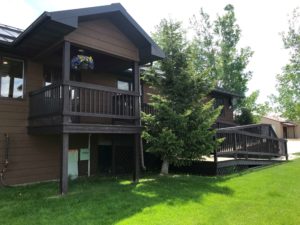


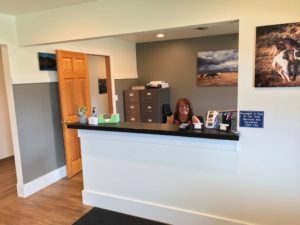
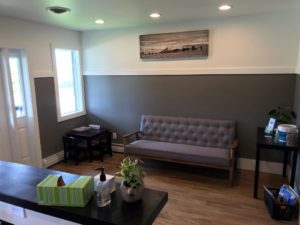
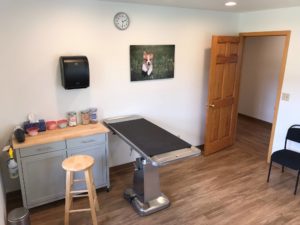


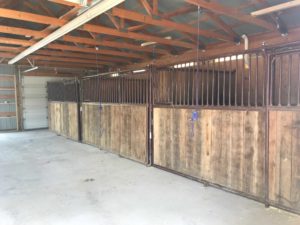
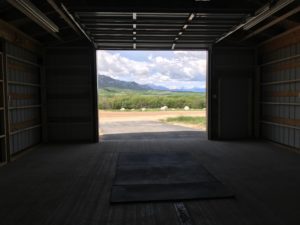
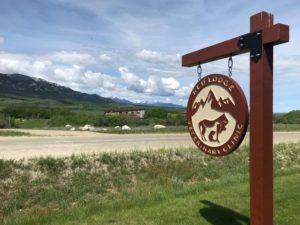
Dr. Casey Gruber his wife Dominique and their team are thrilled to announce we are opening our new facility located at 15 Two Willow Lane, Red Lodge, MT (previously the home of Red Lodge Surveying). Just 1/2 mile from our current location. We are so thankful for the support from the community and everyone that has helped make this dream come true.
Our new facility will provide us the much needed space to continue to practice high-quality mixed animal medicine, in an easy to access location within Red Lodge.
The main building will have 2 exam rooms for you and your pets’ comfort, along with ample space for in-house surgeries, diagnostics and treatments. The equine treatment and examination facility will be connected directly to our hospitalized equine patient barn and bovine facility, allowing us to closely monitor our equine and bovine critical care patients while we continue with our daily in-clinic visits.
We will no longer be providing small animal non-clinical boarding services at our new location. We apologize for the inconvenience.
Directions: Continue NW on Hwy 78, 1/2 mile past current location. Then turn left onto Two Willow Lane. Our new location is 15 Two Willow Lane, the large brown building on the left hand-side. Please enter up the front ramp to reception
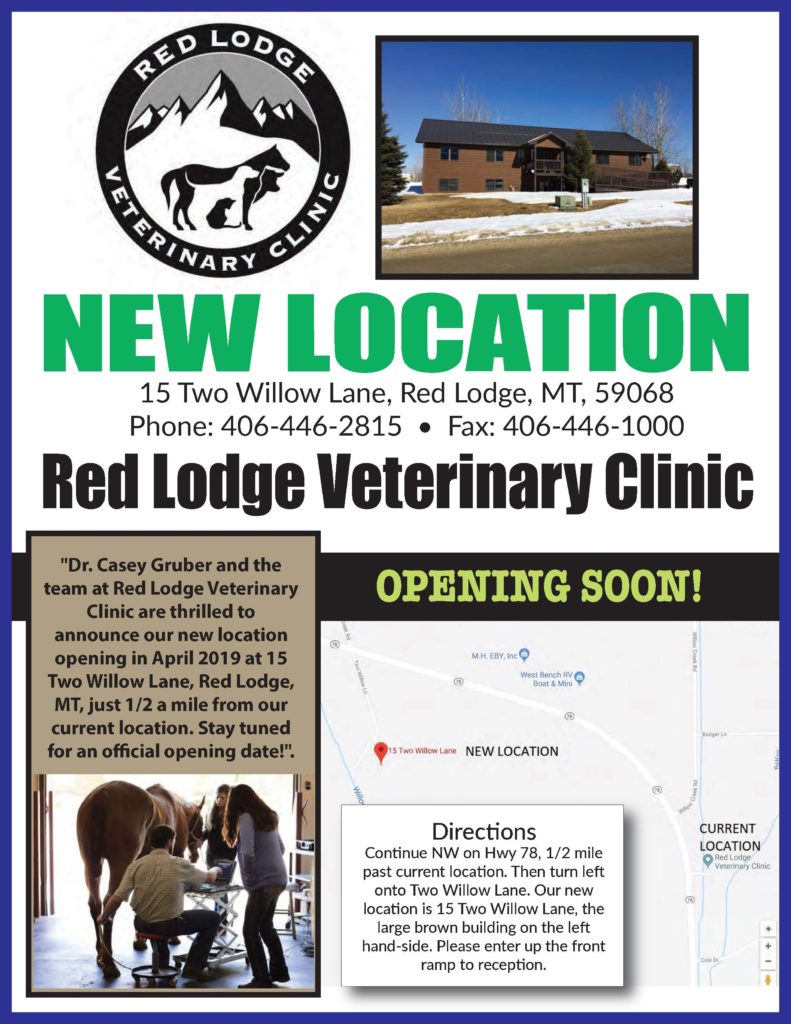
** EXTENDED RECALL**
Your pets’ health is our number one priority.
Hills Science Diet has extended its recall to several of its canned pate/stew dog food due to a potentially dangerous level of vitamin D. Pets who have consumed these products may experience the following symptoms:
• vomiting
• increased thirst
• increased urination
• excessive drooling
• weight loss
• renal dysfunction (if consumed at high levels)
If your pet has consumed any of the affected products, please contact us whether or not they are showing symptoms: 406-446-2815
If you have purchased any of the recalled food on the list from us, please give us a call for a full refund. If you have purchased any of the food on the list from a different company, please follow the instructions provided to learn how to get the affected food taken care of. The following link will also demonstrate how to read the sku numbers to see if the food you have is affected.
We sincerely apologize for the inconvenience,
The team at Red Lodge Veterinary Clinic.
Dr. Casey Gruber and Red Lodge Veterinary Clinic are thrilled to offer our 2nd annual educational seminar for horse owners. This time around we will be focusing on equine lameness. Specific topics include diagnosis, treatment options, common injuries in working and performance horses and ‘when to call the vet’. We are excited to present our guest speaker Dr. Britt Conklin. He is an equine professional services veterinarian with Boehringer Ingelheim Vetmedica, Inc. He earned his undergraduate degree from Texas Tech University, which inducted him into its hall of fame. Upon graduation from veterinary school at Texas A&M, he worked at a large equine referral practice in Weatherford, Texas. More recently he was a practicing veterinarian and owner at Reata Equine Hospital. Conklin has an expertise in dealing with lameness in performance horses, as well as podiatry, and spends his time helping horse owners and veterinarians care for performance horses. He’s a member of the American Association of Equine Practitioners, American Farrier’s Association, and the Texas Equine Veterinary Association.
RSVP quickly as we filled every slot last year! 406-446-2815 or redlodgevet@gmail.com.
